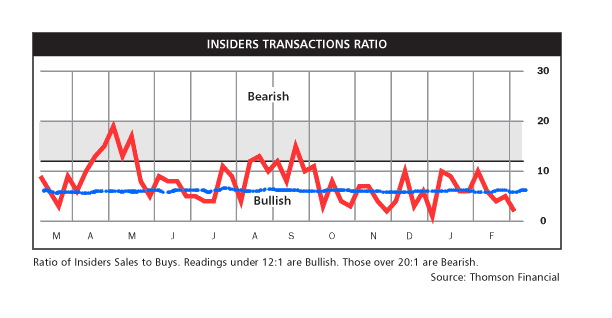Back in 2006 and 2007, when Bonddad used to hang out at a big political blog, I would poke (lighthearted) fun at a few of his posts with something called the "Bonddad Put." The Bonddad Put came into play when the market had sold off 3% or 4% or some other horrendous figure in one day after a downward draft. People would think it was The Big One, and inevitably he would write a top-rated diary entitled something like "A Special Note from Bonddad about the Market."
After a couple of those, I noticed that they were almost perfect markers for a bottom in market sentiment. The Bonddad Put meant it was a sure thing that the market would trade higher for the next 30-45 days -- and it worked! By the time The Big One actually hit in September-October 2008, plunges were common enough that Bonddad no longer inevitably wrote those posts, and so the Bonddad Put never came into play.
Something like that old Put looks like it is in play now. Last Saturday's Barron's weekly financial magazine revealed that investor sentiment is very bearish, with the AAII Index showing bullish sentiiment down to 24.7%, and bearish sentiment at 42.0%. The Market Vane Index similarly showed bullish sentiment down to 40%.
Although I haven't been able to locate it online at the Barron's data page, if you check mutual fund cash flows, you will see that retail investors redeemed about $25 billion worth of equity fund shares in June.
While pundits were growing ever more negative, with calls for 1000 on the DJIA (Prechter), or a pundit tells CNBC that a classic 1930s head and shoulders pattern is repeating -- more on that below), and retail investors were selling out, here's what corporate insiders have been doing:

A note of caution: this is a short-term indicator. When The Big One hit in 2008, corporate insiders were caught as flat-footed as most other people. Here's the same graph as above, culled from a post I wrote over a year ago:


The blue line is my addition, noting how low the ratio of insider transactions had to go for there to be a short-term bottom. Note also that there were several of these in the few months just before The Big One -- so following insider trading would not have kept you out when it hit, unless you sold 30 days after the Put was triggered. For what it's worth, I suspect insiders are more savvy now about deflationary signs of economic downdrafts than they were in 2008.
Now here is the icing on the cake. Where did I read about the CNBC prediction of a Great Depression like head and shoulders formation? At Digby's Hullabaloo, an exclusively political left-wing blog. Now, I happen to agree with Digby about 95% of the time on political matters, but taking investment advice from her is like taking advice from the proverbial shoe-shine boy. Now, who do you think is more likely to be right in their market timing? If bearishness is so pervasive, and expectations of a market move based on a technical indicator so universally known, that investment novices who are political writers warn you about what to expect in the market ....
Of course, the usual caveats apply. I'm not offering investment advice, and I care a lot more about how the market reflects on the real economy than about short term trading. But to me, the odds are that the market is offering up one of those rare low hanging fastballs over the center of the plate .
Shorter version: it looks like we are a lot closer to a bottom than a top.